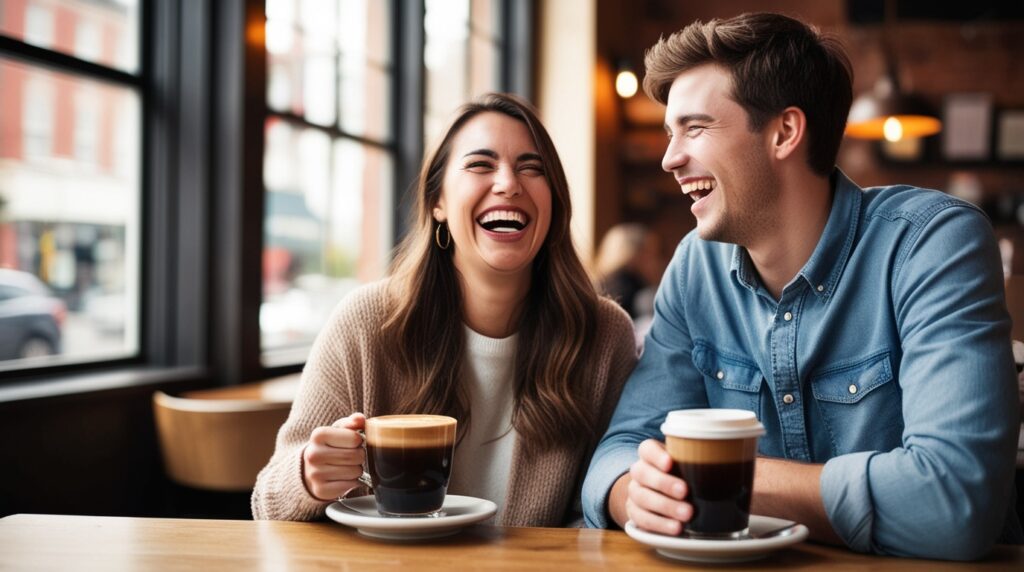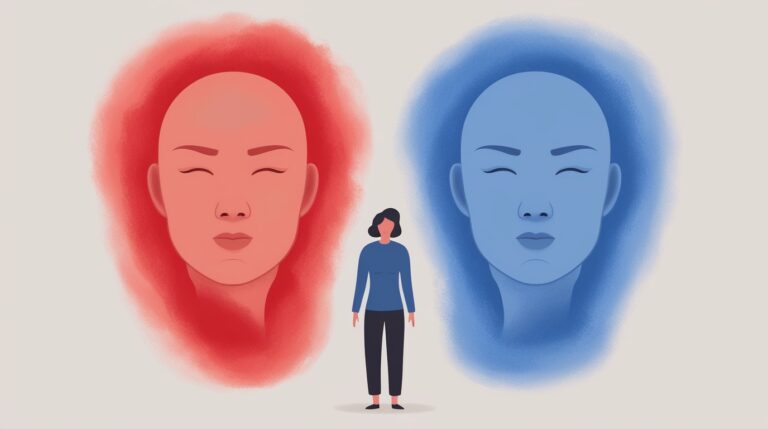Lifestyle Photography: Capturing Life in Its Purest Form
Table of Contents
Introduction to Lifestyle Photography
Lifestyle photography is more than just taking pictures — it’s about telling stories, evoking emotions, and freezing authentic moments that reflect real life. Unlike traditional posed portraits, lifestyle photography focuses on capturing natural expressions and everyday interactions. It’s the difference between a stiff smile for the camera and the spontaneous laughter shared over morning coffee.
In today’s visual-driven world, lifestyle photography has taken center stage. From social media influencers to major brands, everyone wants photos that look real. It’s this sense of authenticity that makes lifestyle photography so powerful. It connects with people because it feels relatable — imperfectly perfect, just like life itself.
The beauty of lifestyle photography lies in its ability to reveal truth through simplicity. Whether it’s a child playing in the backyard or a couple walking hand-in-hand at sunset, each photo tells a story that words cannot. And that’s what makes it one of the most emotional and sought-after photography genres in the modern era.
The Essence of Lifestyle Photography
The core of lifestyle photography lies in capturing real life. It’s not about perfection — it’s about emotion, connection, and narrative. The best lifestyle photographers know how to observe life unfolding and capture its most genuine moments.
Think of lifestyle photography as the visual diary of human experience. It’s the giggle between siblings, the quiet morning rituals, the messy kitchens, and the fleeting glances between lovers. These are the slices of life that define who we are, and lifestyle photographers aim to preserve them beautifully.
While portrait photography often involves directing subjects into certain poses, lifestyle photography encourages movement and spontaneity. It’s about making people feel comfortable enough to forget there’s a camera around. The result? Photographs that breathe life — unfiltered and unforgettable.
History and Evolution of Lifestyle Photography
Lifestyle photography didn’t emerge overnight. Its roots can be traced back to early documentary photography, where photographers sought to capture real-life events and human experiences. In the mid-20th century, magazines like Life and National Geographic popularized photojournalism, paving the way for lifestyle imagery that focused on people and culture rather than just events.
With the rise of digital photography and social media, lifestyle photography evolved rapidly. The camera became a storyteller’s tool, and everyday people became both the subjects and creators. Today, lifestyle photography dominates platforms like Instagram and Pinterest, where authenticity and relatability drive engagement.
What’s fascinating is how the genre continues to evolve. Modern lifestyle photographers combine artistic vision with documentary-style realism. They use light, color, and emotion to create visual narratives that connect deeply with viewers. It’s no longer just about what’s in the frame — it’s about what the image feels like.
Key Elements of a Great Lifestyle Photo
Creating stunning lifestyle photos isn’t just about having the right camera or editing skills — it’s about understanding what makes an image meaningful.
Authenticity: Realness is everything. The best lifestyle shots look effortless, even if they’re planned. The goal is to make the viewer feel the emotion behind the moment.
Emotion: A great photo makes you feel something — happiness, nostalgia, love, or even sadness.
Storytelling: Every picture should have a story to tell. Whether it’s a family breakfast or a walk in the rain, the image should speak volumes without words.
Lighting and Composition: Natural lighting enhances realism. Simple compositions often work best because they don’t distract from the subject.
A successful lifestyle photo feels alive. It’s less about technical perfection and more about connection. The imperfections — the blur of movement, the uneven lighting — often make it more human and, therefore, more beautiful.
Understanding Natural Lighting in Lifestyle Photography
Lighting is the soul of photography, and for lifestyle photography, natural light reigns supreme. Artificial light can sometimes feel too harsh or controlled, while natural light brings warmth, softness, and authenticity.
The golden hour — that magical time just after sunrise or before sunset — is a lifestyle photographer’s dream. It paints everything with a golden glow, creating warmth and emotion in every shot. On the other hand, cloudy days offer diffused light that eliminates harsh shadows, perfect for more subdued and cozy scenes.
Indoors, window light can be your best friend. Position your subject near a window for gentle highlights and natural contrast. Avoid direct sunlight indoors, as it can create unwanted shadows or glare.
Great lifestyle photographers don’t fight the light — they work with it. They use it to tell stories, set moods, and guide the viewer’s attention. Mastering natural lighting isn’t just about exposure; it’s about understanding how light interacts with emotion and space.
Choosing the Right Equipment for Lifestyle Photography

While creativity and emotion drive lifestyle photography, having the right tools makes a significant difference. The camera doesn’t define the photographer, but it certainly helps you tell your story better. For lifestyle photography, flexibility is key — your equipment should adapt to different lighting conditions, environments, and subjects.
Cameras:
Mirrorless and DSLR cameras are the top choices for lifestyle photographers. Models like the Canon EOS R5, Nikon Z6 II, and Sony A7 IV offer incredible dynamic range and color accuracy. However, even compact cameras or high-end smartphones like the iPhone 15 Pro or Google Pixel 8 can deliver impressive results if you understand composition and lighting.
Lenses:
Prime lenses, especially those with wide apertures like f/1.8 or f/2.8, are perfect for creating that dreamy, blurred background (bokeh) while keeping the subject crisp. A 35mm or 50mm lens is a go-to choice for lifestyle photography because it closely mimics the human eye’s perspective.
Accessories:
A lightweight tripod, reflectors, and a few diffusers can enhance your shots dramatically. You don’t need a full studio setup — sometimes, a simple reflector to bounce natural light is all it takes to achieve the perfect look.
Ultimately, the right gear is whatever allows you to move freely and capture life as it happens. A lifestyle photographer must blend into the environment, making the camera an extension of their creative eye rather than a distraction.
Composition Techniques to Enhance Your Lifestyle Shots

Composition transforms an ordinary photo into a visual masterpiece. In lifestyle photography, how you frame a scene can determine how deeply your audience connects with it.
Rule of Thirds:
Divide your frame into nine equal sections using imaginary lines. Placing your subject along these lines or at their intersections creates balance and harmony, making the image naturally pleasing to the eye.
Leading Lines:
Use paths, roads, or architectural features to draw the viewer’s attention directly to the subject. Leading lines guide the viewer’s gaze and create a sense of depth.
Depth and Perspective:
Play with foregrounds and backgrounds. Including environmental elements adds context and makes your image more immersive. Shooting from different angles — crouching low or elevating the camera — can drastically change the photo’s impact.
Framing:
Use doorways, windows, or even foliage to frame your subject. It adds visual interest and focuses the viewer’s attention.
Lifestyle photography isn’t about rigidly following rules — it’s about bending them creatively. Sometimes the best shots are those that break traditional composition norms but feel emotionally powerful and real.
Posing Without Posing: The Art of Natural Expression

One of the biggest challenges in lifestyle photography is making subjects look natural. The secret? Don’t make them pose. Instead, guide them into doing something they enjoy — talking, laughing, walking, or interacting with their environment.
Encourage genuine emotions by creating comfort. Play music, tell stories, or even share a laugh to make people forget about the camera. This helps capture authentic moments — the crinkle of laughter around the eyes, a fleeting glance, or a quiet moment of reflection.
Give your subjects light direction rather than fixed poses. For instance, ask them to “walk toward the light” or “whisper something funny.” These prompts result in movements and expressions that look spontaneous rather than forced.
A great lifestyle photographer acts more like a friend than a director. The goal is to document emotions as they unfold naturally, not to stage them. It’s this raw, imperfect beauty that makes lifestyle photos feel so alive.
Lifestyle Photography vs Portrait Photography
At first glance, lifestyle and portrait photography might seem similar — after all, both involve capturing people. However, their purposes and styles are quite distinct.
Portrait Photography focuses on the subject itself. It’s often staged, with attention to lighting, background, and precise posing. The goal is to highlight the person — their personality, style, or professionalism.
Lifestyle Photography, on the other hand, focuses on context and story. It captures the subject in their natural environment, doing what they love. The setting, lighting, and interactions all contribute to the narrative.
For instance, a portrait might show a woman smiling in front of a plain background. A lifestyle shot, however, would show her laughing while baking cookies in her kitchen — messy flour, natural sunlight, and all.
Both styles have their own charm. Portraits freeze identity; lifestyle photos capture essence. The best photographers often blend both — using the technical control of portraiture and the emotional spontaneity of lifestyle imagery.
Editing Lifestyle Photos for a Natural Look
Editing is where your photos come to life — but in lifestyle photography, subtlety is key. The goal isn’t to alter reality but to enhance it. Over-editing can strip away authenticity, making images look artificial and detached.
Start with basic adjustments: exposure, contrast, and white balance. Keep skin tones natural and colors true to life. Lifestyle photography thrives on warmth, so gentle highlights and soft tones often work best.
Avoid heavy filters that distort the scene. Instead, use presets that maintain a film-like quality or soft, matte finish. Adobe Lightroom, Capture One, and even mobile apps like VSCO are excellent tools for consistent, polished results.
Cropping can also help improve storytelling — remove distractions that don’t serve the narrative. However, be mindful not to overcrop, as it may affect composition and resolution.
The best editing enhances emotion without overpowering it. The viewer should feel as though they’re witnessing the moment firsthand — not looking at a heavily retouched image.
Storytelling Through Lifestyle Photography
At its heart, lifestyle photography is a form of storytelling. Each image should narrate a slice of life — a feeling, a journey, or a relationship. Unlike staged portraits, these photos are not about perfection; they’re about connection. Every photo tells a story that resonates with viewers because it feels real.
To tell a powerful story through your images, start by understanding your subject. What makes them unique? What moments define their life? Then, build your narrative around that. For instance, if you’re photographing a family morning routine, capture the chaos, the giggles, the spilled cereal — all the little imperfections that make the story human.
Use a series of shots to tell a complete tale. Begin with establishing shots (the environment), then move in closer for emotional details — a hand stirring coffee, sunlight pouring through curtains, a child’s curious expression. These micro-moments add depth and authenticity to your narrative.
Lighting, composition, and editing also play crucial roles in storytelling. Warm tones can evoke nostalgia, while cooler hues might express calm or introspection. Your goal as a lifestyle photographer isn’t just to document — it’s to translate feeling into imagery.
In essence, lifestyle photography bridges the gap between memory and art. It captures what words cannot express — the heartbeat of everyday life.
Lifestyle Photography for Brands and Businesses
Lifestyle photography isn’t limited to personal memories — it has become a game-changer in branding and marketing. Modern consumers crave authenticity, and brands have realized that polished product shots no longer hold the same power as real, relatable visuals.
A brand that uses lifestyle photography isn’t just selling a product — it’s selling an experience, a feeling, or a way of life. Think about companies like Apple, Airbnb, or Patagonia. Their imagery doesn’t just showcase items; it showcases stories — people using their products naturally and joyfully in everyday situations.
For businesses, lifestyle photography builds trust and emotional connection. A skincare brand showing a woman applying moisturizer in her morning routine feels more genuine than a sterile studio photo. It communicates, “This could be you.”
When creating lifestyle imagery for brands:
- Understand the target audience: Capture the lifestyle they aspire to live.
- Highlight emotion: Happiness, confidence, adventure — whatever aligns with the brand’s message.
- Keep it authentic: Avoid over-staging; small imperfections add relatability.
Brands that master lifestyle photography don’t just gain followers — they build communities. They turn customers into storytellers who share their own experiences, fueling organic engagement and long-term loyalty.
Tips for a Successful Lifestyle Photoshoot
A lifestyle photoshoot might look effortless, but behind every candid-looking photo is careful preparation. The secret lies in balancing planning with spontaneity.
1. Pre-Shoot Planning:
Define your story. What emotion or moment are you trying to capture? Choose a location that complements the mood — cozy homes for warmth, beaches for freedom, or urban streets for vibrancy.
2. Timing and Lighting:
Golden hour remains unbeatable for natural glow, but mid-morning or cloudy afternoons also offer soft, flattering light. Always observe how light interacts with your environment before shooting.
3. Connection with the Subject:
Spend time talking to your subjects before shooting. Make them comfortable, laugh with them, and let them know it’s okay to be imperfect. The more relaxed they feel, the more natural the photos will be.
4. Keep Shooting:
Don’t wait for the “perfect” moment — capture everything. Often, the most beautiful images come from unexpected in-between moments.
5. Focus on Details:
Small details tell big stories — a hand brushing hair aside, a child’s toy on the floor, the way sunlight hits a coffee cup. These elements make the photo authentic and emotionally rich.
A great lifestyle shoot is not about directing but observing. It’s about creating an environment where life unfolds naturally while your camera quietly witnesses it.
Common Mistakes to Avoid in Lifestyle Photography
Even seasoned photographers make mistakes that can ruin the authenticity of lifestyle photos. Here are the most common ones — and how to avoid them.
1. Over-Posing:
Nothing kills authenticity faster than stiff poses. Instead, guide actions rather than poses. Let your subjects move, laugh, and interact freely.
2. Over-Editing:
Too much retouching makes images look artificial. Avoid extreme color corrections, fake lighting, or unrealistic skin tones. The charm lies in imperfections.
3. Ignoring the Background:
Cluttered or distracting backgrounds can draw attention away from your subject. Simplify your frame by adjusting angles or repositioning slightly.
4. Poor Lighting Choices:
Harsh midday light can create unwanted shadows. Learn to read light and shoot during softer times of the day or use shade effectively.
5. Forgetting the Story:
A beautiful photo means little without a narrative. Always ask yourself — what is this image trying to say? Every shot should communicate a feeling or a moment.
Avoiding these pitfalls ensures your images remain honest and impactful. Remember — the goal isn’t to capture perfection but truth.
The Future of Lifestyle Photography
Lifestyle photography is constantly evolving with technology and cultural trends. What began as a simple attempt to capture reality has now become a global movement shaping the way we view authenticity.
With smartphones offering pro-level cameras, everyone has become a potential lifestyle photographer. The rise of social media platforms like Instagram, TikTok, and Pinterest has amplified the genre’s reach, making storytelling through visuals more accessible than ever.
Artificial Intelligence (AI) is also transforming post-production, offering advanced editing tools that enhance natural light, color grading, and facial recognition without compromising realism. But even as technology advances, the heart of lifestyle photography remains unchanged — emotion.
Future trends point toward even greater authenticity. Raw, unfiltered images, diversity in subjects, and sustainability-focused narratives are becoming the norm. Brands and creators are leaning into real people, real stories, and unedited moments.
Lifestyle photography isn’t going anywhere — it’s only becoming more meaningful. In a world saturated with filters and artificial perfection, people are craving truth. And lifestyle photographers are the storytellers who will continue to deliver it, one genuine moment at a time.
Conclusion
Lifestyle photography isn’t about staged smiles or perfect lighting — it’s about real life. It’s about the messy, beautiful, and spontaneous moments that define us. Whether you’re shooting for a brand or your personal memories, remember: authenticity always wins.
The power of lifestyle photography lies in its ability to connect hearts across distance and time. It reminds us that beauty doesn’t live in perfection — it lives in reality. Every laugh, glance, and tear tells a story worth remembering.
So, the next time you pick up your camera, don’t chase perfection. Chase truth. Capture the life that’s happening right in front of you — because that’s where the real magic lives.
FAQs
1. What is the main goal of lifestyle photography?
The main goal is to capture authentic, real-life moments that tell a story and evoke genuine emotions.
2. What’s the best camera for lifestyle photography?
Mirrorless or DSLR cameras like the Canon EOS R5, Nikon Z6 II, or Sony A7 IV are excellent, but even modern smartphones can produce stunning results.
3. How can I make my lifestyle photos look natural?
Encourage movement, conversation, and interaction rather than stiff posing. Focus on genuine moments instead of staged perfection.
4. What lighting is best for lifestyle photography?
Natural light is ideal — especially during golden hour for a soft, warm glow that enhances realism.
5. Can lifestyle photography be used for commercial purposes?
Absolutely. Brands use lifestyle photography to connect emotionally with their audience and promote products in a relatable, authentic way.







